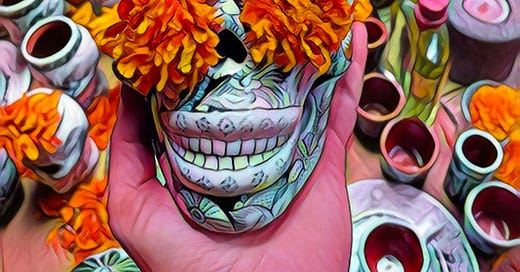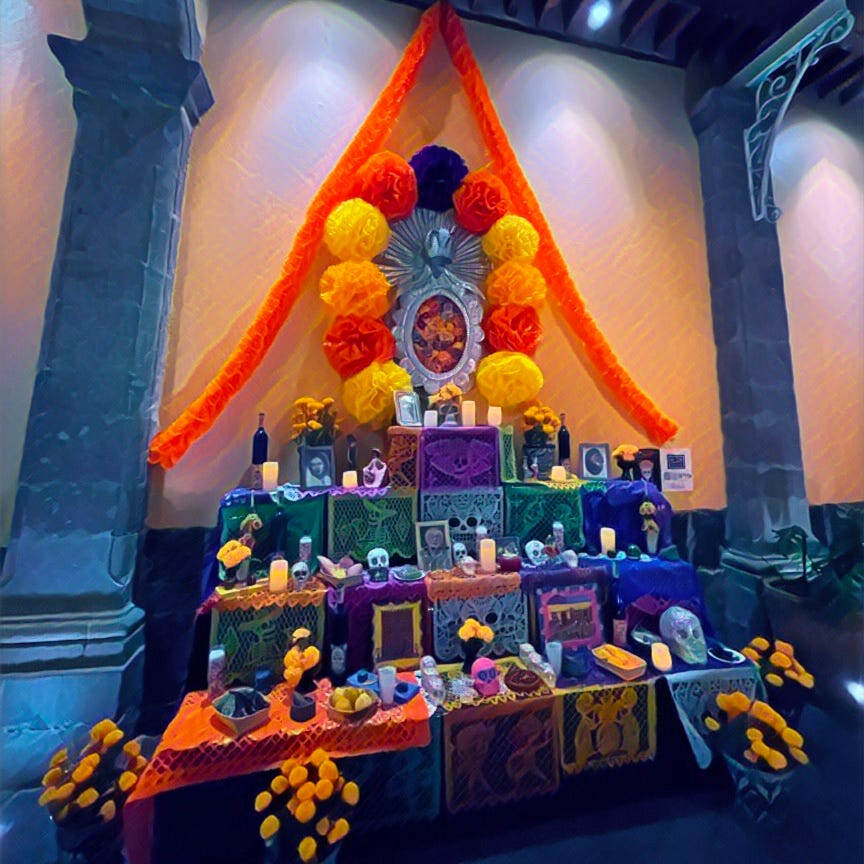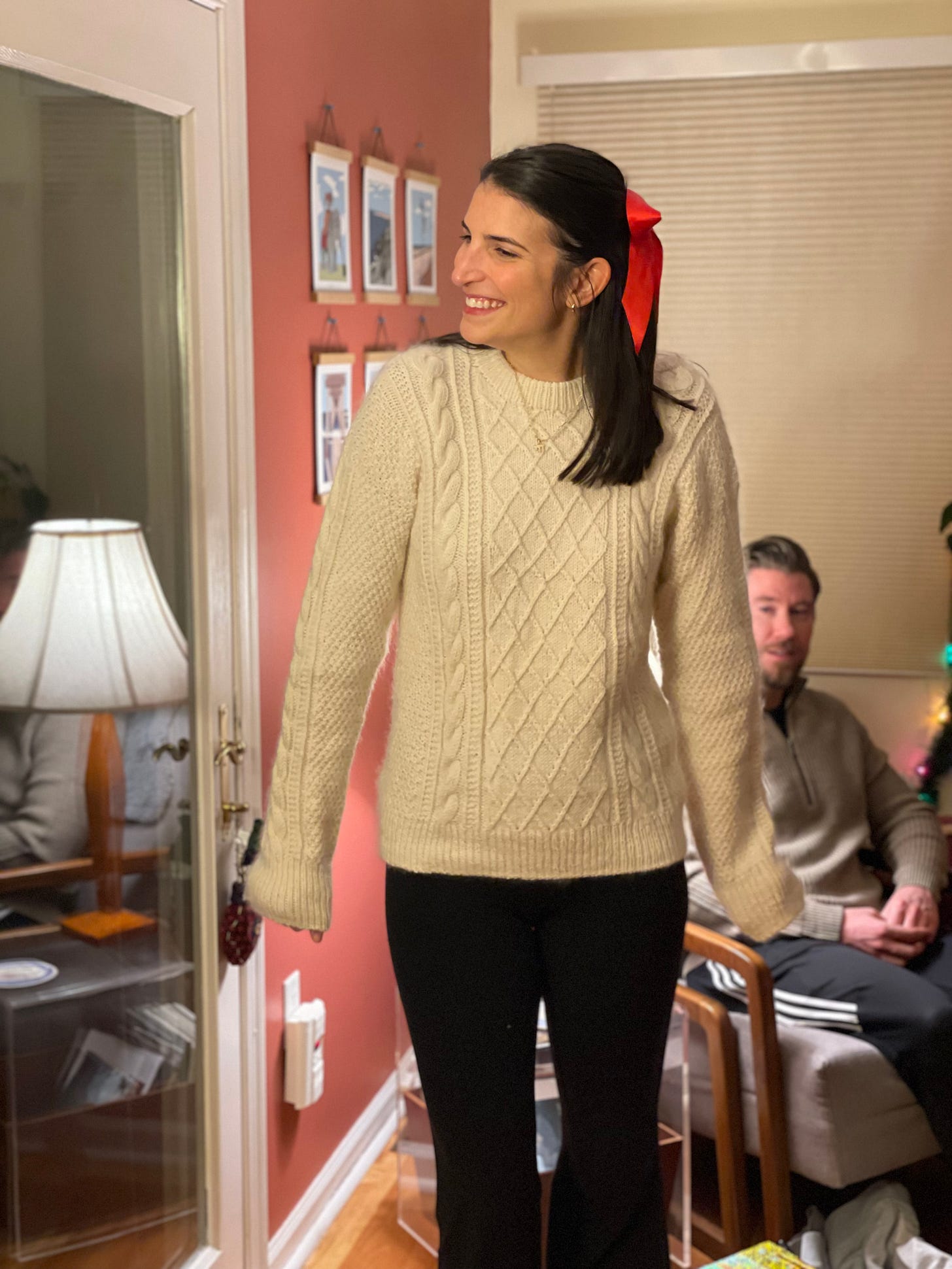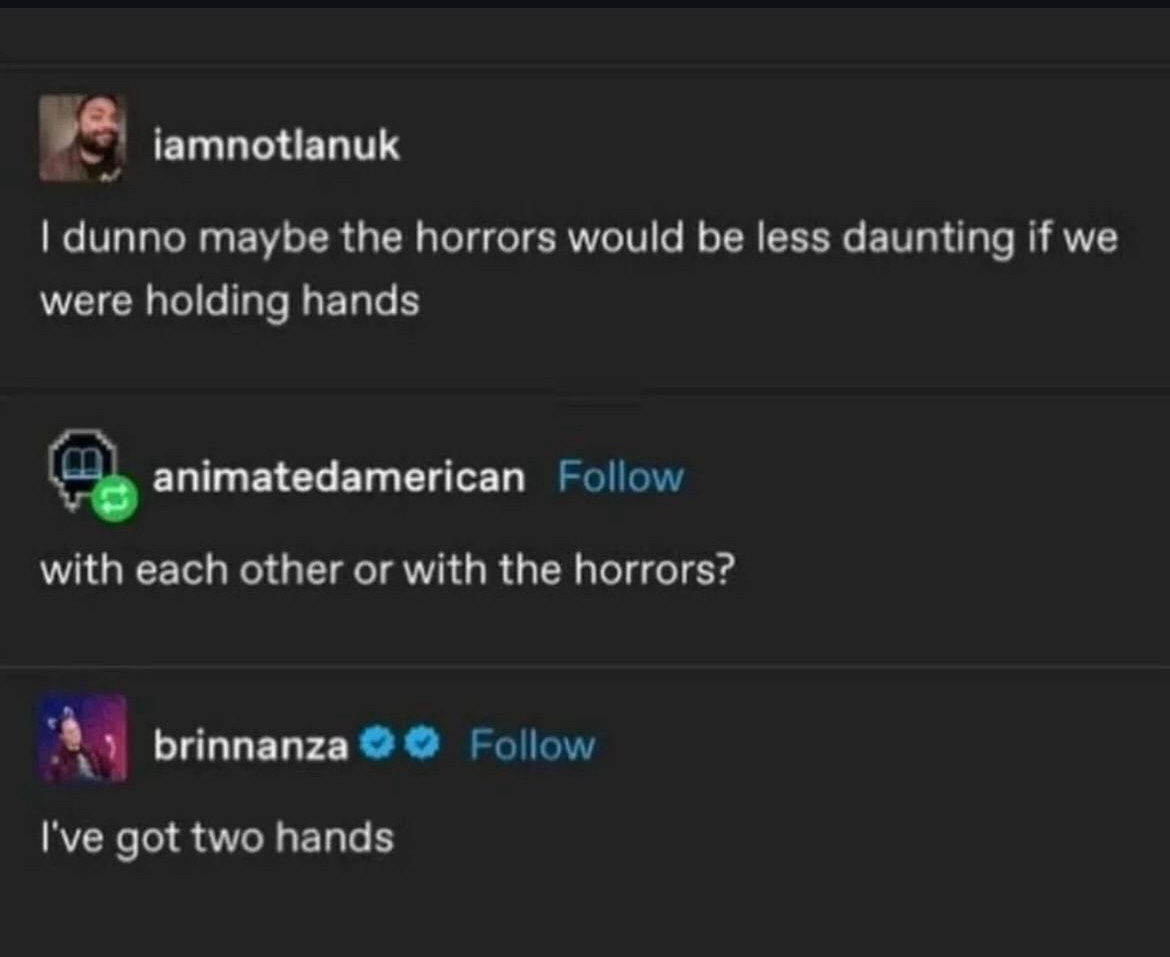I haven’t written anything new for months and it isn’t, of course, for lack of updates.
It was a swampy summer, slow and densely packed. It was hard to see anything beyond it. I had long-range sights on one thing that was coming for me at the end of the season, which was our trip to Mexico City. Vanessa had been planning the trip for years, persisting as it fell through over and over again, and this iteration—the one she invited me on—stuck.
We ate so many tacos (which I guess goes without saying). We saw the Frida Kahlo house, bought luchador masks outside the Arena México, paid a guide to take us through the Mercado de Sonora where we were warned against taking pictures of the occult wares for fear of retaliation by the gang that protects the black market.
But we were there for one thing, really: to participate in Día de los Muertos.
We were tourists, so of course we went to see the parade. Certainly we stopped by the Zócalo to see the ofrenda monumental—lively papier-mâché skeletons towering five feet over us as we walked among the cosplayers swirling their skirts dressed as catrinas1.
But I could have avoided all of that and still had a great experience, if I’m being honest. The parade is in fact only eight years old2, a concession to the tourism industry.
The real celebration stretches far beyond it, in foyers and cemeteries, on balconies and vacant lots, where people build altars of all kinds to their loved ones. There are the standard inclusions—sugar skulls and pan de muerto, as well as candles and water and salt. But no two are the same, because each honors different people lost and each is built by a different person who is at a specific stage of their remembrance. You see photographs sometimes, but more often you might just see keepsakes, symbols or remnants of the life that was lived. The one in our hotel lobby had a luchador mask. One in a restaurant had a molcajete. I stopped for a coffee once in a place whose ofrenda was crafted not just with fruit and figurines, but with a Modelo and a near-full pack of Marlboros leaned lovingly against a portrait of the deceased.
I had wanted to see Día de los Muertos in Mexico for years, because to me it has felt like the only way of grieving that has ever made sense. Here, no performative solemnity; here, no facile fantasy that the presence of celebration could ever imply respite from sorrow. In this view of mortality, death is not something to be stubbornly ignored until it inevitably visits itself upon us; it is to be approached and beheld, to be understood and welcomed as the next phase of life.
Many people find the whole ordeal morbid, but I find that’s a pretty American3 way of thinking about it. In the States, our value system is so individualistic that one of the reasons we fear death is that we see it as a ticking clock against our own life’s progress. Each of us wants to distinguish ourselves, to accomplish something special so that we will be remembered—and death is the thing that could get in the way of that achievement. But that fear, I think, comes from the fact hat we’ve made grieving so private. We feel we can only “live on” through some feat of greatness, some particular impact that cannot be ignored. But when we bring grief into the light—when we acknowledge that every family mourns, and everyone can do it together—we can rest easy that we will be remembered, just for having lived and been loved.
When we woke up on the morning of the parade and talked to our hotel concierge, her eyes were genuinely sparkling as she recommended places for us to take in the sights. “Today is a day when many of us, like me, are going to feel sad for what we’ve lost,” she explained. “But it’s also really beautiful. Because we’re all feeling it together.”
Vanessa and I both wear black almost exclusively, it’s true, but walking out of the hotel that morning did not feel like a funeral procession. The sky was blue, the city streaked in organic swaths of magenta bougainvilleas and vibrant garlands of orange cempasúchil. Our path brought us past a riot of stippled, neon color from the large-scale alebrijes studding the parade route. The papel picado that seemed to adorn every doorway made the whole city feel like a picture book.
Vendors on the street were selling face painting services, silk flower crowns, chicharrón and elotes and cotton candy—and, brilliantly, tiny wooden folding stools that you could use to either get rest from long bouts of standing, or to give you a boost to better see the parade over the crowd. There was music, stilt-walkers, floats modeled after axolotls and xoloitzcuintli dogs, laughter and dancing, elaborate puppets and masks inspired by some of Mexico’s finest surrealists.
It exuded life—everything that the living have to offer—all in service of honoring the dead.
When I’m not writing regularly in this newsletter, I think it’s easy to conclude I’m not currently grappling with grief, or that I’m too busy living to be reflecting. Usually, I just don’t have enough of a container for my feelings to articulate them.
Since my last letter, I’ve gone to do a well check on a friend’s ex when no one had heard from him, only to find him overdosed on his couch. I’ve reckoned with another friend’s death by suicide, when just weeks prior he had told me how isolated and self-critical he felt. I heard in a roundabout, somewhat painful way about the sudden death of someone who was once my family member and grappled with the fact that I hadn’t been notified, much less invited to the memorial. I’ve heard increasingly grave updates about a cousin with ovarian cancer, a woman universally regarded as bright and energetic, as she gradually accepted—and willed the people around her to accept—that she was going to die.
And I’ve watered the plants and bopped around to concerts and dinner parties and folded the laundry again and again and again in the way that affirms that in all of it, through every heartbreak, life goes on.
When I stood on the curb of the Paseo de la Reforma, I thought my losses of the last few years, and I thought of them with fondness. The experience was not, as our hotel concierge had prepared me for, about what I no longer had. It was about gratitude for having been here, about the improbable miracle of coexisting in this world at the same time of things that once brought me such joy, and about how much more life I had yet that would span alongside joys I didn’t yet know.
As I raised my sights above the paradegoers and their skull-painted faces, up to the rays of sun that stubbornly shot through the clouds and haloed the gold-plated angel of independence towering 150 feet above us, I saw wisps of something pale and ghostly, lighter than air. It was stray bits of cotton candy, flying free from where they were spun on the sidewalk before the eyes of hopeful children. I plucked one from where it was suspended. It dissolved on my tongue and it was sweet.
Yours in survival,
Arielle
Three Things Bringing Me Joy
Very Important People.
Adam got a subscription to Dropout TV and we’ve been watching their stuff—notably, Smartypants and the breathtaking special Vanessa 5000. But we’ve mostly been digging Very Important People, a series in which improv comedians are brought to a mirrorless room full of SFX makeup artists to be absolutely transformed with no knowledge of what’s being done to them; are given a grand reveal and have a short window of time to create a fully-realized character based on their new looks; and then, in character, appear as guests on a talk show hosted by Vic Michaelis. I cannot tell you how much I lost my shit watching Anna Garcia portray Fourth-Grader of the Year Zeke Aaron McKinley.Hit ‘Em.
This summer, musician Drew Daniel tweeted: “had a dream I was at a rave talking to a girl and she told me about a genre called ‘hit em’ that is in 5/4 time at 212 bpm with super crunched out sounds thank you dream girl.” And then the internet did its thing. A bunch of musicians across the internet chimed in with their takes on what a Hit ‘Em track would sound like. And as someone who loves both collaborative creation and wonky time signatures, I have been just delighted. Here are just some of my faves.Handmade gifts.
Last year my sister asked if she could ask me for something for Christmas—in fact, if I would make her a sweater. She asked in October, so I had to tell her I couldn’t meet her timeline, but that I would be thrilled to do it for next Christmas. I had her pick the pattern and the color and the yarn, I took her measurements, I made her a swatch so she would get a sense of the finished product. And then I worked on it—for a full year. I finished earlier this month and have been vibrating with excitement to give it to her, and it turned out better than I ever could have imagined. She said she felt guilty, when I asked for no gifts this year, that she wouldn’t have something to offer in exchange, but I’m not sure I was any less excited than she was when she opened it. Also she’s beautiful and that doesn’t hurt.
This is Probably a Metaphor:
What I’m Reading
Before I took to the road, a friend tried to get me to go to a department store with him. He said it was to improve the place where I lived. He said, “I want to know you are reading beneath this lamp.” This fellow was dying. He knew it and I did not. I think he was tucking me in. He was making sure all of his friends had the right lamps, the comfiest pillows, the softest sheets. He was tucking us all in for the night.
—from “Jesus is Waiting” in The Dog of the Marriage by Amy Hempel
I am deeply obsessed with catrinas, because why do these skeletons have childbearing hips? Sexualizing the personification of Death is such a beautifully naked exposure of the intertwining of our mortality and sex drives.
The government founded the parade in direct response to a scene in a James Bond movie!! Side note: did you guys know about the pizza effect??
(derogatory.)






